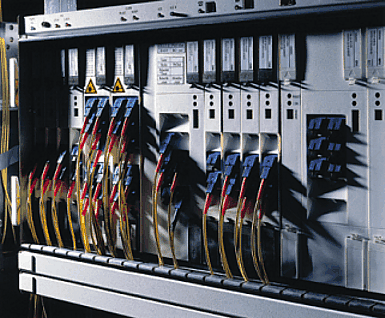distribution cabinet
Distribution cabinets are standardized units for holding cabling components in 19" construction, which corresponds to a width of 482.6 mm. The standard originates from the American and was later codified by ANSI/ EIA as RS-310-C. Internationally, the standard is known as IEC 60297, and in Germany as DIN 41494.
In all cases, it refers to a rack with external dimensions between 600 mm and 900 mm. This housing has a mounting frame to accommodate 19" devices. The height of the devices to be installed is specified in height units(HE), whereby one height unit is 44.45 mm. There are two mounting holes per height unit at a distance of 31.75 mm. There are distribution cabinets from a few height units to those with 47 HEs, which corresponds to a cabinet height of 2.2 m. The depth of a distribution cabinet is always 450 mm. The distance for the mounting screws is 465.1 mm.
The distribution cabinet forms the node in the structured cabling. It is used to accommodate passive and active network components such as splice boxes, patch panels, bridges, routers, switches and hubs.
Distribution cabinets are available in a wide variety of configurations and with diverse installation functionalities. These include the easiest possible installation of cabling components, facilities for cable routing, grounding, air conditioning, lighting and locking. Certain requirements are placed on the location of distribution cabinets: For example, air pollution, temperature development, safety and fire damage.

